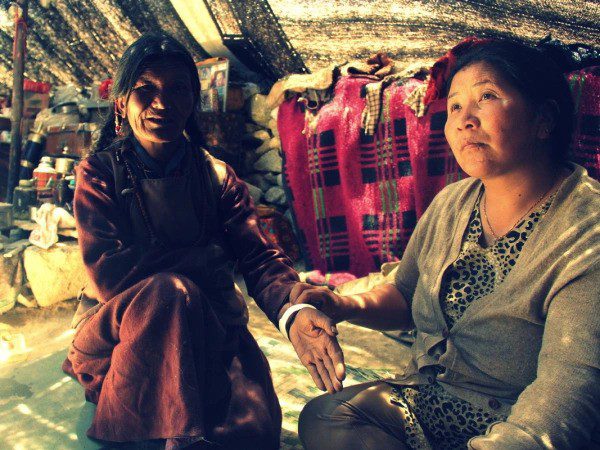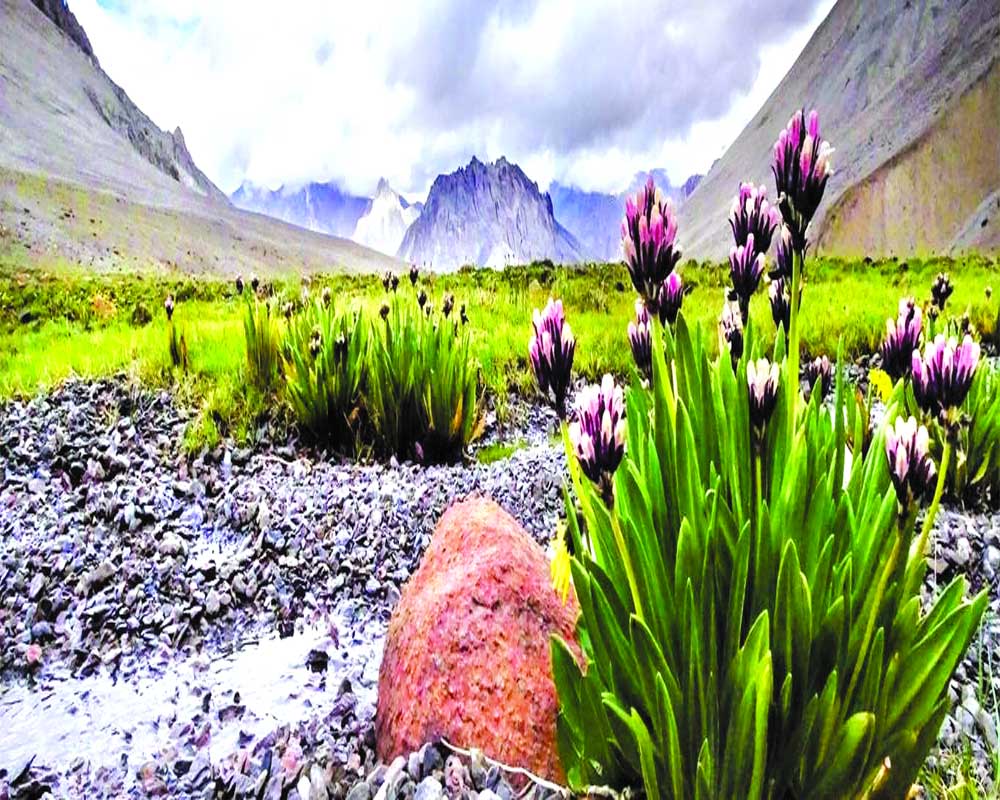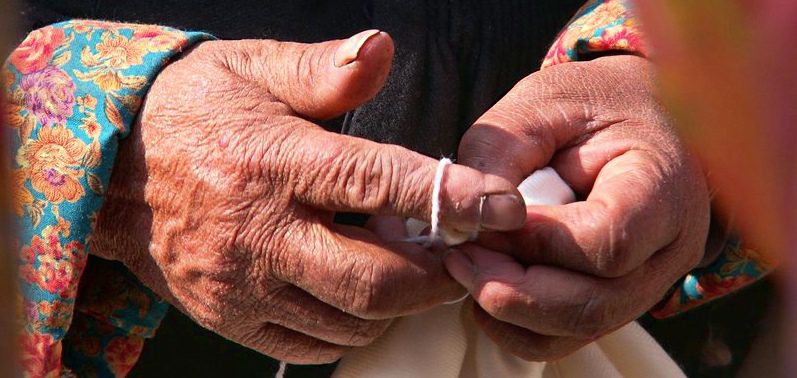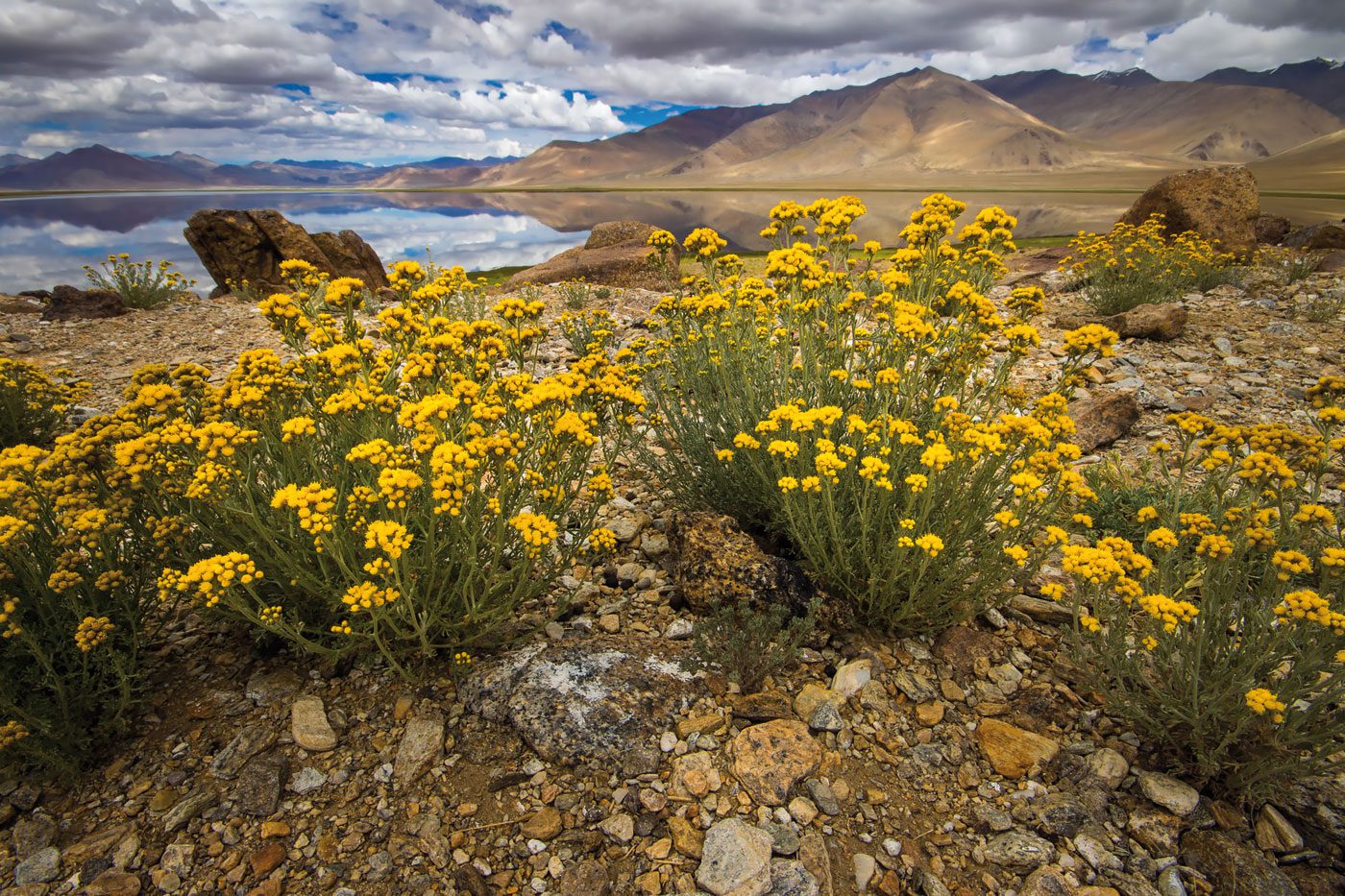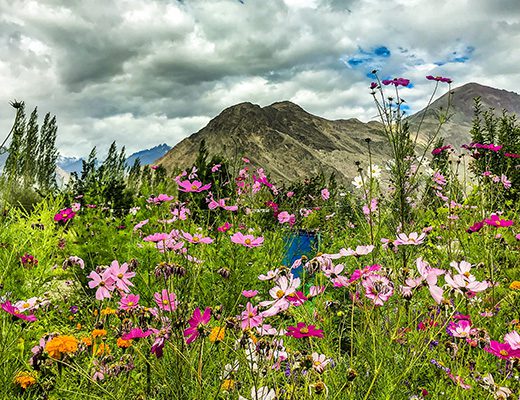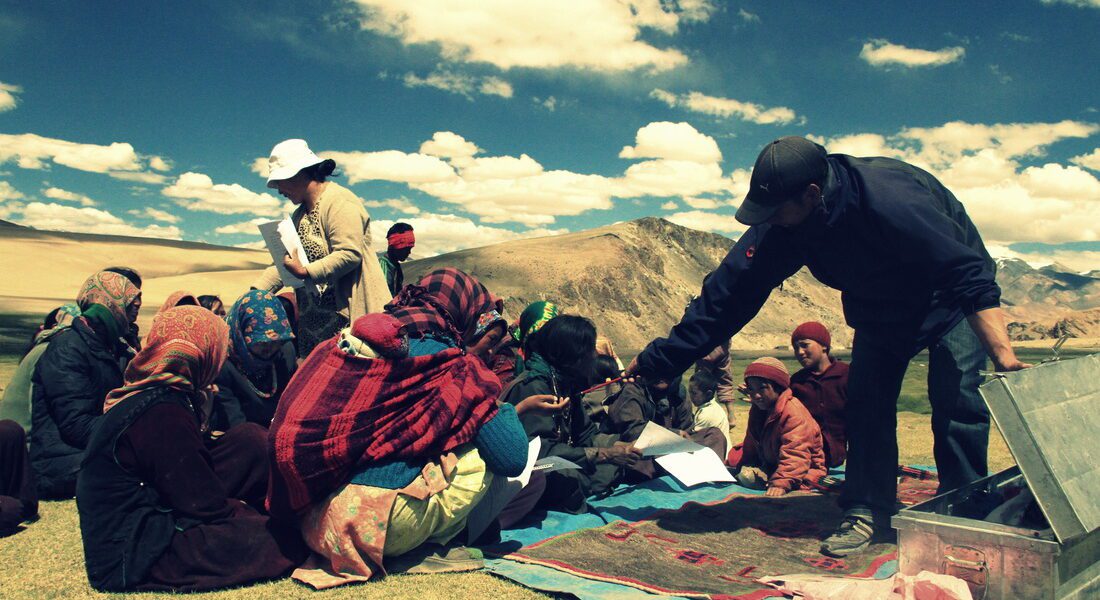In the heart of the Himalayas lies Ladakh, a region known not only for its rugged landscapes and high-altitude lakes but also for its wealth of medicinal plants. Here, local healers, known as Amchis, have spent centuries mastering the art of herbal medicine through a tradition known as Sowa-Rigpa—a system deeply rooted in Tibetan healing practices. This article explores Ladakh’s unique flora, sustainable herbal trails, and the knowledge shared by Amchi healers who offer a rare glimpse into ancient healing practices that are still relevant today.

Introduction to Ladakh’s Medicinal Heritage
Overview of Ladakh’s Unique Biodiversity
Ladakh’s high-altitude ecosystem, with its arid yet diverse terrain, is home to many rare medicinal plants that can’t be found elsewhere. Plants like Rhodiola, Arnebia Euchroma, and Saussurea Costus are valued for their adaptogenic properties and resilience, thriving despite the challenging environment. These plants are essential for the local Amchi medicine, and traditional healers use them to treat common ailments, chronic diseases, and stress-related conditions.
The Role of Amchi Healers in Ladakh’s Communities
The Amchi healers are central to Ladakhi culture, preserving and practicing ethnobotanical knowledge that’s passed down through generations. They rely on local plants and Tibetan medical principles to create remedies that balance the body’s energy. Amchis prepare herbal concoctions, ointments, and powders, employing both ancient techniques and modern methods to cater to the needs of their communities.
Understanding Traditional Herbal Medicine in Ladakh
What Is Sowa-Rigpa? Ladakh’s Ancient Healing Tradition
Sowa-Rigpa, the Tibetan medical tradition practiced in Ladakh, is one of the oldest healing systems in the world. Known as “the science of healing,” Sowa-Rigpa combines herbal medicine, diet, meditation, and therapies to support wellness and balance. Practiced by local healers and monks, this system involves a holistic approach, where specific plants and minerals are chosen to suit individual needs.
Importance of Medicinal Plants in Tibetan and Ladakhi Cultures
In Ladakhi culture, plants are more than just herbs—they’re an essential part of spiritual and physical well-being. Herbs like Juniper and Rhododendron are not only used in medicinal formulas but also in ceremonial rituals, symbolizing protection and purification. These plants have become part of the region’s spiritual landscape, revered for their healing properties and deeply ingrained in local customs.

Exploring Herbal Trails with Local Healers
Discovering Ladakh’s Medicinal Plants: Key Trails to Explore
Certain trails in Ladakh offer visitors a chance to see high-altitude medicinal plants in their natural habitats. The following table highlights popular trails and the medicinal plants you can expect to encounter:
| Trail |
Featured Plants |
Medicinal Benefits |
| Nubra Valley |
Rhodiola, Juniper |
Stress relief, immune boosting |
| Markha Valley |
Saussurea Costus, Artemisia |
Anti-inflammatory, digestion aid |
| Zanskar Region |
Arnebia Euchroma, Rosehip |
Skin healing, rich in antioxidants |
“Walking the herbal trails with an Amchi healer was a transformative experience. Seeing these plants and learning about their uses opened my eyes to the wisdom preserved in Ladakh’s traditions.” – Sarah P., USA, Nutritionist
“Ladakh’s herbal trails provide a unique blend of adventure and insight into traditional medicine. I returned feeling more connected to nature and with a newfound respect for these natural remedies.” – James L., UK, Biologist
Ethical Harvesting and Sustainable Practices on Herbal Trails
To preserve Ladakh’s biodiversity, healers practice sustainable harvesting methods. This includes gathering only small portions of plants and ensuring they can regrow, so the ecosystem remains balanced. Visitors on these herbal trails are encouraged to respect nature and avoid taking plants home, helping maintain the environment for future generations.

Key Medicinal Plants Found in Ladakh
Rhodiola: The Himalayan Adaptogen
Known as a potent adaptogen, Rhodiola grows in high-altitude areas and is used to reduce stress and increase energy levels. Amchi healers use this herb for patients facing physical and mental fatigue, especially those affected by Ladakh’s extreme climates. Rhodiola is also known for its ability to help the body resist physical, chemical, and environmental stressors.
Arnebia Euchroma: Known as “Zang Mi” in Ladakh
Arnebia Euchroma, or “Zang Mi” in Ladakhi, has vibrant red roots used in ointments for wounds, cuts, and burns due to its antimicrobial properties. It’s widely respected in Ladakhi medicine as a skin healer and is also applied to treat inflammation.
“I had the chance to observe an Amchi healer prepare a paste using Arnebia Euchroma. It’s amazing how something so natural can work as effectively as synthetic products.” – Emma G., Canada, Herbalist
Saussurea Costus: A Highly Valued Medicinal Plant
Used traditionally to treat digestive and respiratory issues, Saussurea Costus is an anti-inflammatory plant found in higher altitudes of Ladakh. Due to its rarity and value, it’s cultivated carefully to prevent overharvesting, highlighting the importance of conservation efforts in Ladakh.

How Local Healers Use Medicinal Plants in Ladakh
Common Treatments and Herbal Formulas by Ladakhi Healers
Amchi healers create formulations tailored to individual needs. Common treatments include herbal teas for digestion, ointments for pain relief, and powders to boost immunity. Each formula is crafted from wild plants gathered in Ladakh and aims to restore balance within the body’s energy systems.
Amchi Healing Techniques: Blending Ancient Knowledge with Modern Needs
The Amchi method doesn’t stop at herbal remedies; it also incorporates spiritual practices and energy-balancing techniques. For instance, certain herbs are prescribed for meditation support, and specialized breathing techniques are used alongside herbal treatments to enhance healing effects.
The Benefits of Medicinal Plants from High-Altitude Regions
Adaptogenic Qualities of High-Altitude Herbs
Plants grown at high altitudes, such as Rhodiola and Saussurea, adapt to survive under extreme conditions, making them powerful adaptogens. These herbs are known to enhance resilience, reduce stress, and improve stamina—benefits highly sought after in today’s world.
Therapeutic Properties of Himalayan Medicinal Plants
Himalayan herbs often contain higher concentrations of antioxidants and anti-inflammatory compounds due to their growing environment. These plants are particularly effective for conditions like hypertension, chronic fatigue, and respiratory problems.

“I’ve struggled with high blood pressure, but after trying a few herbs suggested by an Amchi healer, I noticed a remarkable improvement.” – Oliver K., Germany, Engineer
Cultural and Conservation Efforts for Medicinal Plants in Ladakh
Traditional Knowledge and Cultural Preservation of Ladakhi Herbs
Preserving ethnobotanical knowledge is essential to Ladakh’s culture. Many of these medicinal plants are not only vital for health but are also part of cultural rituals and practices. Efforts are ongoing to document and share these traditional healing practices with younger generations.
Conservation Initiatives for Ladakh’s Endangered Medicinal Plants
Due to increased interest in herbal tourism and alternative medicine, certain plants in Ladakh are now at risk. Local communities, with the help of non-profit organizations, have created initiatives to monitor and regulate the harvesting of native medicinal plants.
Herbal Tourism in Ladakh: A Growing Attraction
How to Plan a Herbal Trail Tour in Ladakh
Herbal tourism in Ladakh allows visitors to experience the region’s unique plant life up close. For an immersive experience, travelers can book tours led by local Amchi healers, who offer insights into plant identification, uses, and the traditional significance of medicinal herbs. The best months for such tours are June to September, when the plants are in full bloom.

Dos and Don’ts for Visitors on Herbal Trails
To ensure a respectful visit, travelers should follow these guidelines:
- Do ask questions and learn from local healers.
- Don’t pick or disturb plants.
- Do follow instructions on sustainable practices.
- Don’t enter restricted areas without permission.
FAQs about Ladakh’s Medicinal Plants and Local Healers
What Are the Most Common Medicinal Plants Used in Ladakh?
Some of the most commonly used plants include Rhodiola, Juniper, Artemisia, and Arnebia Euchroma, each known for specific healing properties, from boosting immunity to treating skin conditions.
How Does the High Altitude Affect Medicinal Plant Potency?
High-altitude plants tend to be more potent due to their unique adaptation to harsh climates, which concentrates their active compounds, making them especially powerful for medicinal use.
Can Visitors Participate in Herbal Medicine Workshops in Ladakh?
Yes, many local Amchi practitioners offer workshops that allow visitors to learn about medicinal plants, remedies, and traditional preparation methods.
Conclusion: The Importance of Preserving Ladakh’s Herbal Legacy
Ladakh’s rich heritage of medicinal plants is not only a gift to its people but also to those seeking natural and holistic wellness solutions. Through sustainable tourism and community conservation efforts, we can ensure these precious plants continue to thrive. The Amchi healers are custodians of ancient wisdom, reminding us of the enduring connection between nature and health—a connection as vital today as ever.
Ladakh medicinal plants
Ladakh medicinal plants | The journey through Ladakh mirrors the very essence of unraveling unknown horizons, as its dramatic landscapes and unique cultural identity awaken the deepest sense of wonder and exploration. Ladakh medicinal plants delves into this realm where inner peace intertwines with the wild, untouched beauty of Ladakh. From the snow-capped peaks to the serene monasteries, every step in Ladakh is a step toward self-discovery. The mountains, ancient paths, and unspoken mysteries stretch before travelers, offering a meditative experience where each encounter feels both effortless and transformative. Whether it’s trekking across remote valleys or sitting quietly beside a sacred lake, Ladakh invites those who seek a deeper connection to the natural and spiritual world.

Ladakh medicinal plants
The monasteries of Ladakh stand as living monuments to the region’s profound spiritual heritage. With origins dating back over a thousand years, these ancient structures are both places of worship and repositories of art, culture, and wisdom. Hemis Monastery, one of the largest in Ladakh, is renowned for its annual festival, featuring colorful mask dances performed by monks. The history of these monasteries reflects Ladakh’s role as a crossroads between India, Tibet, and Central Asia, where religious and cultural influences have intertwined over the centuries.
The Tibetan Buddhist influence is especially evident in the architecture and daily life of the monks. Prayer wheels, intricate murals, and the soft hum of chants fill the air as visitors explore the monastery grounds. Each monastery, from the remote Lamayuru to the awe-inspiring Thiksey, offers a window into the spiritual heart of Ladakh. These centers of meditation, learning, and community life continue to thrive, preserving traditions that have shaped Ladakh for generations.
Why Visit Ladakh for Ladakh medicinal plants?
Ladakh is a destination that transcends mere travel. It offers a journey that touches both the outer and inner landscapes, making it a perfect setting for those who seek to unravel their own unknown horizons. The region’s breathtaking scenery—from towering mountain ranges to hidden valleys—provides not just an escape but a space for contemplation and growth. Ladakh’s culture, deeply rooted in Buddhist practices, invites visitors to reflect on their own lives and the world around them.
Ladakh’s people, known for their warmth and hospitality, add to the richness of the experience. Villages like Sumda Chun and the legendary Nubra Valley introduce travelers to a way of life that is intricately connected to nature and spirituality. Staying in local homestays allows for immersive experiences where one can learn about traditional Ladakhi customs, share meals made from local produce, and participate in community rituals.

Beyond its natural beauty, Ladakh offers a unique opportunity to explore oneself. The vastness of the region’s plateaus and the clarity of its skies seem to mirror the vastness of the human spirit. Whether it’s standing atop a mountain pass at 18,000 feet or meditating in a centuries-old monastery, Ladakh helps unravel the unknown horizons within each traveler.
Finding the Best Ladakh medicinal plants in Ladakh
Finding the best places in Ladakh to experience “Ladakh medicinal plants” involves venturing off the beaten path. Ladakh’s lesser-known treks, such as those leading to secluded monasteries or high-altitude lakes, offer unparalleled opportunities for solitude and reflection. The Markha Valley trek, for instance, takes travelers through verdant valleys, ancient villages, and high-altitude passes, allowing for both physical and spiritual exploration.
Ladakh’s iconic lakes, including Pangong Tso and Tso Moriri, are ideal spots for quiet contemplation. Their still waters reflect the sky, creating a mesmerizing landscape that feels timeless and infinite. Sitting beside these lakes, especially at dawn or dusk, brings an overwhelming sense of peace and connection with nature.

For those interested in Ladakh’s spiritual heritage, exploring monasteries such as Alchi, Phyang, or Diskit can be a transformative experience. These sites are not just places of worship but also centers of art, philosophy, and wisdom. Visiting these monasteries, with their ancient murals and intricate statues, offers insight into Ladakh’s rich cultural tapestry.
Ladakh’s Atmosphere and Ladakh medicinal plants
Ladakh’s atmosphere is unlike any other place on Earth. The stark contrasts between the rugged mountains and the serene, tranquil monasteries create an environment that feels both raw and sacred. The traditional decor in Ladakhi homes and religious sites reflects this balance, with mud-brick houses adorned with prayer flags and colorful thangkas (Buddhist paintings) that add warmth and spiritual meaning to the space.

The interiors of Ladakhi homes, often simple and functional, are filled with symbols of devotion. Small shrines dedicated to Buddhist deities are common, and the air is often fragrant with incense. The use of earthy materials, like stone and wood, along with brightly colored textiles, creates an inviting and peaceful space, perfect for relaxation and reflection.
Traditional Ladakhi Cuisine
Traditional Ladakhi cuisine is an integral part of the region’s identity, offering a unique blend of flavors that reflect its harsh climate and remote location. Hearty, warming dishes such as thukpa (noodle soup) and momos (dumplings) provide the sustenance needed to endure Ladakh’s cold temperatures. Skyu, a thick stew made with root vegetables and barley, is another staple of the Ladakhi diet, designed to nourish both body and spirit.

Drinks like butter tea, made with yak butter and salt, are a must-try for anyone visiting Ladakh. This rich, savory drink is not only warming but also hydrating, making it essential for those venturing into the high-altitude regions of Ladakh. Chang, a local barley beer, is often enjoyed during festivals and community gatherings, adding a sense of joy and camaraderie to any occasion.
Live Cultural Ladakh medicinal plants in Ladakh
Ladakh is home to a vibrant cultural scene, with festivals and live performances held throughout the year. The Hemis Festival, which celebrates the birth of Guru Padmasambhava, is one of the largest and most famous events in the region. Monks dressed in elaborate costumes perform cham dances, which depict the triumph of good over evil. The energy of the festival, with its bright colors, rhythmic music, and elaborate rituals, draws visitors from around the world.
Other local festivals, such as the Losar (New Year) and Ladakh Festival, provide visitors with the chance to witness traditional dance, music, and crafts that have been passed down through generations. These events are more than just entertainment; they are a celebration of Ladakh’s rich cultural heritage and its deep connection to the spiritual world.
Trekking and Outdoor Activities Ladakh medicinal plants
Ladakh is a trekker’s paradise, offering some of the most stunning and challenging routes in the world. From the famous Ladakh medicinal plants, which follows the frozen Zanskar River, to lesser-known routes like the Sham Valley or Nubra Valley treks, Ladakh’s landscape offers endless possibilities for adventure and discovery. The high-altitude passes, such as Khardung La and Chang La, offer breathtaking views of snow-capped peaks and sprawling valleys.

Wildlife enthusiasts will also find Ladakh medicinal plants to be a haven for rare species such as the snow leopard, Himalayan blue sheep, and the Tibetan wild ass. Winter expeditions to spot the elusive snow leopard in the Hemis National Park are gaining popularity among wildlife photographers and conservationists alike.
The Importance of Preserving Ladakh’s Ladakh medicinal plants
Ladakh’s rich cultural and environmental Ladakh medicinal plants is under increasing threat from climate change and mass tourism. Preserving this unique region requires careful attention to sustainable tourism practices. Choosing eco-friendly accommodations, supporting local businesses, and participating in community-led conservation efforts are just a few ways that visitors can contribute to the preservation of Ladakh’s natural and cultural heritage.
Ladakh’s people have a long history of living in harmony with their environment, practicing sustainable agriculture, and maintaining a deep spiritual connection to the land. Visitors are encouraged to follow the same principles, leaving no trace and respecting the fragile ecosystems that make Ladakh so special.
Etiquette and Tips for Visiting Ladakh medicinal plants
Before visiting Ladakh, it’s essential to understand and respect the region’s customs and traditions. As a deeply spiritual place, Ladakh requires visitors to dress modestly, especially when visiting monasteries or attending religious ceremonies. Always ask for permission before taking photographs inside monasteries or of local people.
Medical Ladakh medicinal plants
Spa trail Ladakh medicinal plants
Ladakh medicinal plants

When Ladakh medicinal plants, remember to stay on designated paths to avoid damaging fragile ecosystems. Tipping is appreciated but not expected in most settings, and it’s important to carry cash, as many remote areas do not accept credit cards. Lastly, be mindful of altitude sickness and take the necessary precautions when traveling to higher elevations.
Conclusion: Enjoying Ladakh medicinal plants in Ladakh
Ladakh is a place where the physical and spiritual worlds converge, offering travelers a journey unlike any other. Whether you’re trekking across high-altitude deserts, exploring ancient monasteries, or simply sitting in quiet reflection by a mountain lake, Ladakh invites you to unravel your own unknown horizons. By respecting the region’s traditions and practicing sustainable tourism, you help ensure that Ladakh’s beauty and cultural richness will be preserved for future generations to explore and enjoy.
